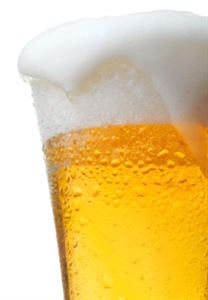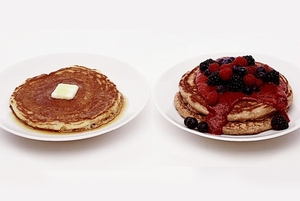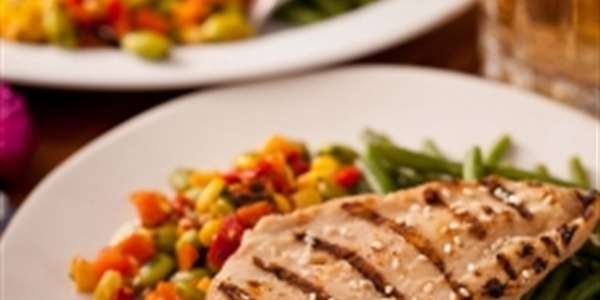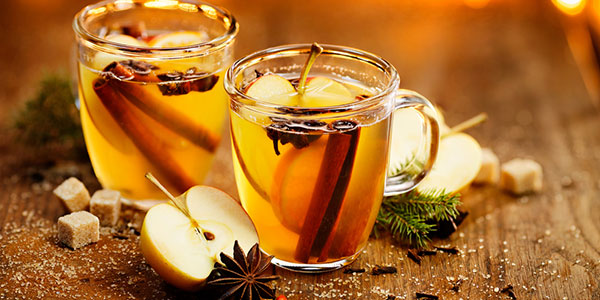Seasonal Drinking
Seasonal Drinking

Oh, the festive holiday advertising. It’s always some big, jovial gathering of happy people and a resplendent spread of mouthwatering food, from simple salads to sumptuous desserts. And, of course drinking alcohol. No good meal is complete without the tinking of wine glasses, or a hearty beer, or later, a rich, smooth cocktail in front of the fire.
So they tell us, anyway. But what they don’t tell us are all the downsides of adding that seasonal drinking, those essential alcoholic beverage to our celebrations, and we’re only talking about the nutritional considerations, here.
We all know that, generally speaking, even the most conscientious dieters, the most rigorous of careful eaters, will usually relax their usual standards to make room for some holiday indulgences.
You don’t even need a big holiday. Researchers who track eating patterns have shown that we Americans tend to significantly increased our caloric intake even over weekends, as compared to weekdays.
We eat and drink more on the weekends, but you may be surprised by where most of our weekend calories are coming from.
A recent study found that among American adults aged 19 through 50, the biggest increase in caloric intake on weekends came not from indulging in extra desserts or having another afternoon snack, but from drinking alcohol. And if we up the volume on the alcohol for any old weekend off, think how this might play out when we’re feeling compelled by tradition at one holiday party after another.
People don’t often think of drinking alcohol as a calorie source. It’s not hard to see why. We usually think of getting our calories from sources of nutrition. There’s no nutritional value to alcohol at all, and while you may pick up a few carbs from beers and even a little fat from the goodies that go into some of those fancy holiday mixed drinks, you’re just not very likely to count them. That means your imbibing could represent a stealthy but "potentially significant" source of calories.
We know that even among people who tend to pay attention to caloric intake, liquid calories often slip in unnoticed. It is not only drinking alcohol that we need to be careful of. Research shows that even with non-alcoholic beverages, people forget to count the caloric content of their drinks. Sodas are the main offender of adding stealth calories to the American diet, but they are not alone. There’s a pretty good chance those extra weekend beers, or that cup of holiday grog just won’t get factored into the overall calorie count, or compensated for by cuts elsewhere.
The other issue for diet is really the main problem with drinking alcohol in general. It lowers inhibitions. The same affect that makes one drink lead to another, can also make one drink to lead to, say, a second serving of thick, cheesy au gratin potatoes, or another slice of double chocolate sin cake.
One glass of wine or a beer, depending on the type, is likely to add between 80 and 180 calories. That’s not so much, in itself. But the relaxed attitude and lowered inhibitions most people get from that first glass of wine or beer usually make the second drink "complete with all its calories" seem more appealing. And it has that same affect for all the lovely, tempting food that we were only going to have in moderation this year (really, this year we MEAN it!). This is especially likely to come into play during the holidays, because it’s already a special occasion, and we’re already making exceptions to our rules.
-
The Best Ways to Boost Your Metabolism
V
-
8 Chocolate-Vanilla Treats Under 80 Calories
V
-
Cheat-Proof Your Diet
V
-
Healthy-Carb Diet Favorite Frozen Meals
Getty Images The CarbLovers Diet
-
3 Ways to Indulge Without Gaining a Pound
V
-
High Protein Diet For Weight Loss
There are several weight loss diet plans that are designed to assist
- DON'T MISS
- 5 Natural Healthy Weight Loss Diet Tips
- Healthy Diet | Variety is the key to a healthy life
- Meal Delivery Service Curbs Bad Eating Excuses
- 5 Ways to Have a Healthier Thanksgiving
- Ultimate Metabolism-Boosting Workout
- Diet Home Delivered Meals - Losing Weight Just Got a Lot More Satisfying!
- Clutch On To The Ideal Diet Coffee At Cafefit
- Americas Top 10 Healthiest Diets
- This Easy Exercise Burns More Fat Than 1,000 Ab Crunches
- Fat-Proof Your Life




